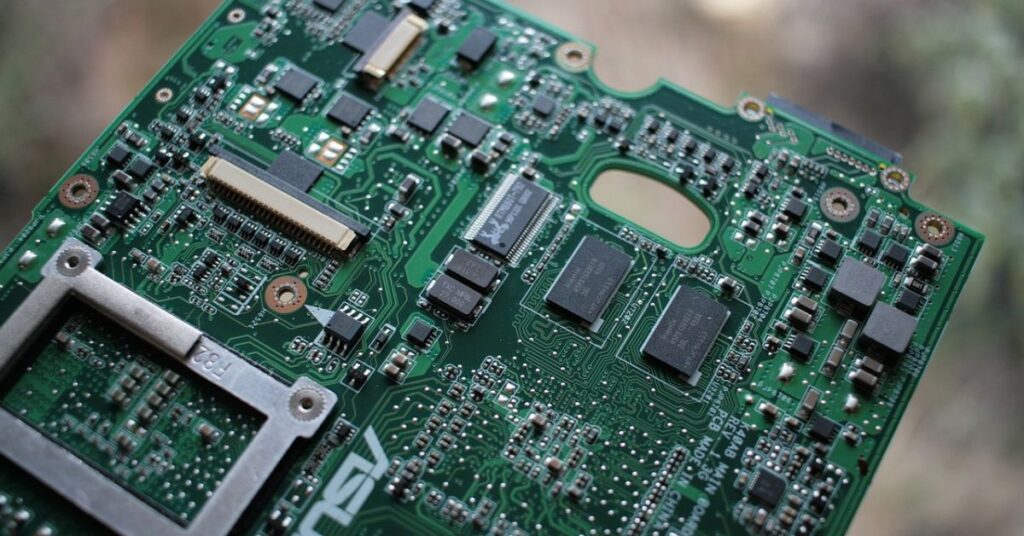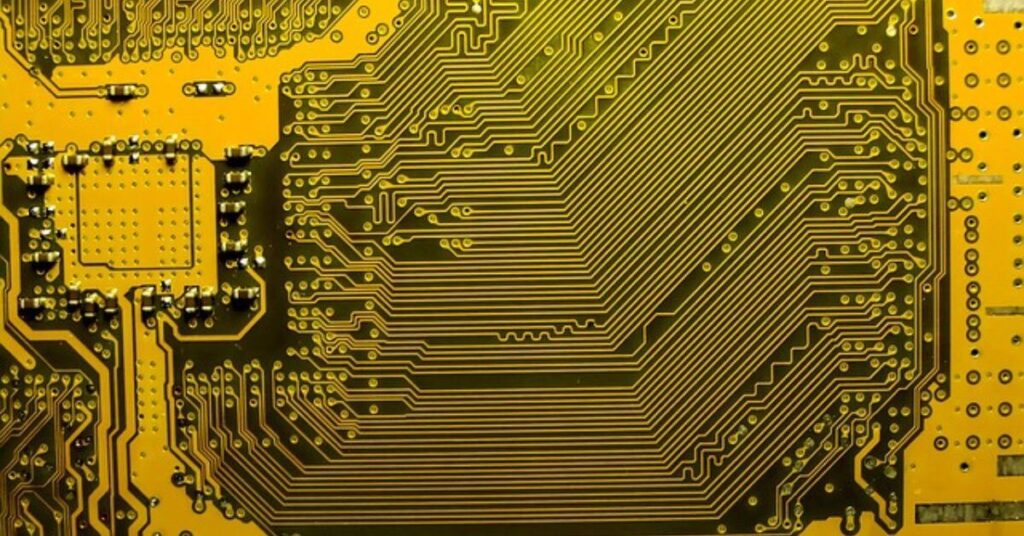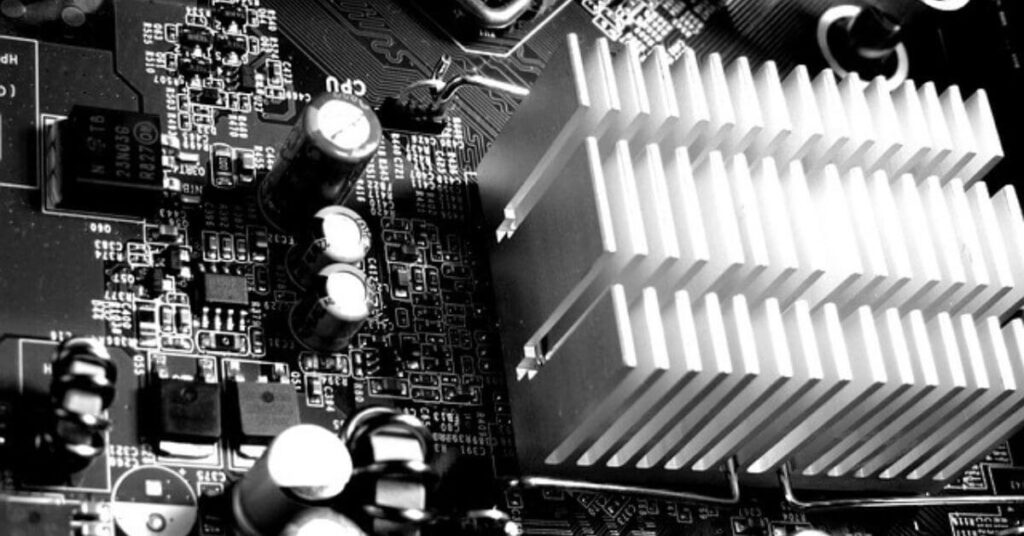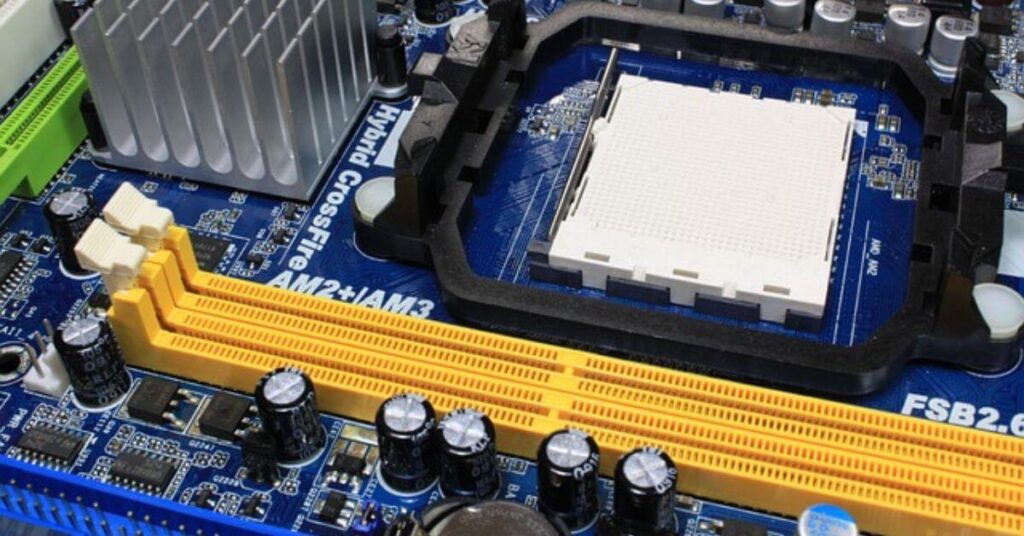The question Why motherboard is green? often intrigues individuals delving into the world of computer hardware. The solder mask, a protective layer that shields the underlying copper traces from environmental factors and facilitates soldering during manufacturing, is why motherboards are typically green in color.
Green was initially selected because of its strong contrast, which made it simpler to recognize and troubleshoot individual parts. Even though motherboards nowadays come in various colors, the classic green PCB (Printed Circuit Board) still represents the advancement of computer technology.
Table of Contents
Why motherboard is green?
Solder mask is the main substance that gives motherboards their green color. A layer called a solder mask is put on the printed circuit board’s (PCB) surface to shield and insulate the copper traces that make up the circuit. Although other colors like red, blue, or black are also used, they are usually green.
Green was chosen for solder masks primarily for historical and pragmatic reasons. Green was one of the most widely used colors for solder masks in the early days of electronics manufacturing because it offered a good contrast for white silkscreen printing, which is used to label components and markings on the PCB. Green was also a color that was simple to produce regularly.
Green has remained the most popular and conventional color for motherboards, although new manufacturing techniques enable a variety of colors. Since it has become the norm, it is now simpler for manufacturers and users to recognize and connect green PCBs to motherboards. It’s important to remember that the motherboard’s color is mostly a matter of convention and tradition in the electronics industry; it has no bearing on the motherboard’s functionality or performance.
Green Is Great for Easing Inspections and Fighting Visual Tiredness
Green is a practical color choice for motherboards that goes beyond tradition. Green is excellent for combating visual fatigue and making inspections easier. The unique color increases contrast, which helps enthusiasts and technicians recognize parts and possible problems when doing inspections.
Green also has a low visual fatigue factor, making it easy on the eyes even after prolonged use. This deliberate choice of color emphasizes the value of practicality in design decisions while also adhering to industry conventions and improving the usability and efficiency of computer hardware.
Green color benefits on the motherboard

Beyond aesthetics, green is important to motherboards because it is essential to the technical accuracy of solder mask dams. Essentially, the traditional green solder mask is unique in that it is the only color that can produce 0.1mm solder mask dams. On the other hand, while other colors like yellow, red, and blue are comparable, they usually result in slightly larger dimensions, measuring about 0.12mm.
While still viable, black and white tend to produce slightly larger dams, measuring about 0.15mm. This technical detail highlights the special benefits of the classic green color in guaranteeing exacting motherboard manufacturing standards.
Alternatives and Customization:
Although green is the default, it’s crucial to remember that not all motherboards follow this pattern. Some manufacturers are responding to the desire for customization from consumers by providing motherboards in multiple color options. This gives users the chance to customize their systems and depart from the traditional green aesthetic.
Aesthetics and Branding:
The green motherboard’s enduring popularity has also been influenced by its aesthetic appeal. The color has come to represent the traditional design of computer hardware. Furthermore, some brands employ color as a fundamental component of their branding strategy to establish a recognizable visual identity.
How To Check Motherboard Drivers?
Read this helpful article on your computer as well.
Some other colors of motherboards



summary
In summary, the primary cause of motherboards’ green hue is the application of a green solder mask, a substance that is put on the PCB’s surface to protect and insulate copper traces. Green was chosen because it was historically common, made for silkscreen printing, and was relatively simple to manufacture regularly.
Although there are other technically possible colors for motherboards, Green has established itself as a conventional and standard choice, acting as a recognized convention in the electronics industry. In the end, the motherboard’s color does not affect how well it functions, highlighting the design decision’s aesthetic and historical elements.
Frequently Asked Questions (FAQ) About Motherboard Colors:
Does the color of the motherboard impact its functionality?
No, the color of the motherboard, whether green or another color, does not affect its performance or functionality. The color is primarily an aesthetic choice and a result of manufacturing conventions.
Can users choose the color of their motherboard when purchasing one?
While some manufacturers may offer motherboards in different colors, the availability of color options can vary. It’s advisable to check the product specifications and options provided by the manufacturer or retailer when making a purchase.
Why was green chosen as the traditional color for the solder mask?
Green became a traditional choice for solder masks due to its good contrast for white silkscreen printing, making component labels and markings easily readable. Additionally, green was a color that could be consistently manufactured.
Can the color of the motherboard change over time or due to environmental factors?
Under normal usage and proper conditions, the color of the motherboard should remain stable. However, exposure to extreme environmental conditions or improper handling could potentially affect the appearance of the solder mask over time.
Does the color of the motherboard affect its resale value or performance upgrades?
Generally, the color of the motherboard has no impact on its resale value or the ability to perform upgrades. Buyers typically focus on the motherboard’s specifications, compatibility, and features rather than its color.
Are there any trends suggesting a shift away from green motherboards in the industry?
As of the latest information available, no significant trends are indicating a widespread shift away from green motherboards. Green remains a prevalent and traditional choice, though manufacturers may continue to experiment with different colors based on market demands and design trends.
Are there any industry standards for motherboard colors?
No, no specific industry standards are dictating the color of motherboards. Manufacturers have the flexibility to choose the color based on their design preferences and consumer demand.
